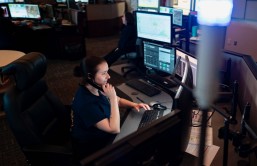
(Photo : Photo by Craig Barritt/Getty Images for TIME 100 Health Summit )
This Feeding Tube Awareness Week, learn where feeding tube care can be addressed and more about updated technologies, like the ENvue navigation system, to avoid risks of lung collapse.
In his 6th Annual World Patient Safety, Science & Technology Summit speech, former American president Bill Clinton said, "I know that tube feeding has saved many lives, but I now know how many it can cost."
(Credit: Patient Safety Movement)
Practitioners in the field also make efforts to spread awareness and uplift the feeding tube patient and parent community. The Pediatric Nutrition Support Nurse Beth Lyman MSN, RN, CNSC, FASPEN, has over 36 years of experience in her field. As she states in her speech to the Patient Safety Movement Foundation, she shares a larger vision of "zero preventable deaths."
As a board member of the New Opportunities for Verification of Enteral Tube Location (NOVEL) project, Lyman helps "define and promote best practice for nasogastric feeding tube placement in infants and children." The organization also works with new inventions in the industry on concepts that identify accurate feeding tube placement.
It's not only people like Bill Clinton and Beth Lyman who speak on this important medical necessity. Even celebrities like comedian Jim Gaffigan and Hunger Games star Stanley Tucci have personal and close family experiences with feeding tubes.
Jim Gaffigan and his wife Jeannie actively raise awareness on the subject. Jeannie said she relied on feeding tube nutrition for months as it helped her recover from brain surgery in 2017. She wrote in a heartfelt article, "As a patient, I now know how vital good nutrition is for speedy healing and recovery." She continued, "If it were not for tube feeding, my health outcome might have been different."
Stanley Tucci also speaks openly about his feeding tube experience. Tucci had a feeding tube for six months in 2021 due to a cancerous tumor on the base of his tongue. As a result, he could not eat and relied on enteral nutrition throughout the chemotherapy process.
This Feeding Tube Awareness Week, take extra care to learn where feeding tubes require the most attention and about updated technologies, like the ENvue navigation system, to avoid lung collapse.
About Feeding Tube Awareness Week
The Feeding Tube Awareness Week (Feb. 6-10, 2023) is an important part of the year intended to help people understand the benefits and risks of feeding tubes and raise awareness about patients needing this type of care.
Did you know that 35 million feeding tube placements are facilitated every year worldwide? One of the unfortunate complications is that 2-5% of those are misplaced in the lungs. Out of all misplaced feeding tubes, about 30% end in lung collapse, also known as pneumothorax.
This week will hopefully open opportunities to comfort and educate parents, patients, and medical professionals as they deal with certain pains and stigmas surrounding feeding tubes.
Supporting those in need of feeding tubes and helping raise awareness on the subject provides significant physical and mental benefits for patients who cannot digest enough nutrients through the mouth.
This article will guide you through some of the major risks of feeding tube misplacement, the importance of patient safety during the procedure, and new technologies, such as ENvizion Medical's ENvue navigation system, that are improving current hospital procedures and reducing the risk of lung collapse.
Lung Collapse and Other Risks Associated with Misplaced Feeding Tubes
The navigation process in feeding tube placement can be dangerous, especially when utilizing blind placement with traditional methods of identifying tube location (such as pH test and air auscultation). Some bigger risks of a misplaced feeding tube are lung collapse (pneumothorax) and aspiration pneumonia.
Pneumothorax is a serious complication that may occur when a feeding tube is accidentally inserted into a patient's lungs (pulmonary system). It can happen when the blind insertion method is used because practitioners cannot reliably know if a feeding tube is properly inserted past the airways, through the esophagus, and into the stomach or small intestine.
Aspiration pneumonia occurs when a nasogastric or nasoenteral tube (NGT/NET) is mispositioned in the esophagus or stomach in patients who require small bowel feeding. In this situation, liquid or food is breathed into the lungs, causing inflammation or infection of the lungs or airways. Today, 28% of malposition cases result in pneumonia.
Most medical teams use traditional blind insertion methods and confirm feeding tube placement with processes like X-ray, pH tests, and air auscultation. These methods are still in place despite the global introduction of new, safer technology to avoid misplacement.
The traditional confirmation methods used with blind placement are risky because they are done only after the feeding tube is placed. This timing may be too late to avoid the risk of injury or death. In addition, repeated X-ray confirmation exposes the patient to unnecessary radiation.
ENvue is a navigation system that helps reduce repeated radiation exposure. The system's technology also reduces the chance of misplacement in the lungs by providing real-time guidance during insertion. It also assists with small bowel placements, therefore reducing the chance of aspiration pneumonia. Its real-time, personalized body mapping navigation feature obviates blind insertions and harmful placement methods.
The Importance of Awareness in Feeding Tube Patient Safety
Although the percentage of misplaced feeding tubes may seem minor in the grand scheme of the medical world's problems, the patient risk associated with each occurrence is serious. The risk is something government officials and high-ranking people in business focus on as unsafe care when it comes to patient safety. According to the World Health Organization, "the occurrence of adverse events due to unsafe care is likely one of the 10 leading causes of death and disability in the world."
To keep up with best practices among medical staff, innovative technology introduced to the field can help regulate patient safety in hospitals. Especially concerning adverse effects, such as lung collapse and aspiration pneumonia, patient safety can be addressed as a top priority if hospitals and medical decision-makers start to incorporate the latest feeding tube devices, products, and technologies.
New Technology to Help the Medical World of Feeding Tubes
It is estimated that half a million feeding tube placements lead to lung collapse (pneumothorax) every single year worldwide. That's not to mention the repeated X-ray radiation that occurs with traditional location confirmation methods.
A company called ENvizion Medical developed a feeding tube insertion technology that reduces lung collapse at an extensive level. Their solution reduces the high risk of complications, chance of death, and injury associated with nasogastric feeding tube placement.
Their product, the ENvue System, is an electromagnetic placement system with integrated navigation sensors that help ensure the tube's safe placement. It guides the medical staff through the patient's body, avoiding lung misplacement and allowing accurate access to the small bowel.
With technologies like this, it seems promising that the world is catching on to the severity of issues among the feeding tube patient and family communities.
Other incredible and revolutionary feeding tube product technology includes pumps, valves, and bags. Products like these naturally provide a higher sense of urgency among medical teams to implement the latest technology.
Investing in safer feeding tube products ensures the standard procedure of feeding tube placement in hospitals will continue to improve, in terms of safety and success rates, without the high risk of complications such as lung collapse.
Due to the knowledge of risks associated with feeding tubes, this Feeding Tube Awareness Week should emphasize the importance of investing in patient safety with all available means and technological products.
* This is a contributed article and this content does not necessarily represent the views of hngn.com








